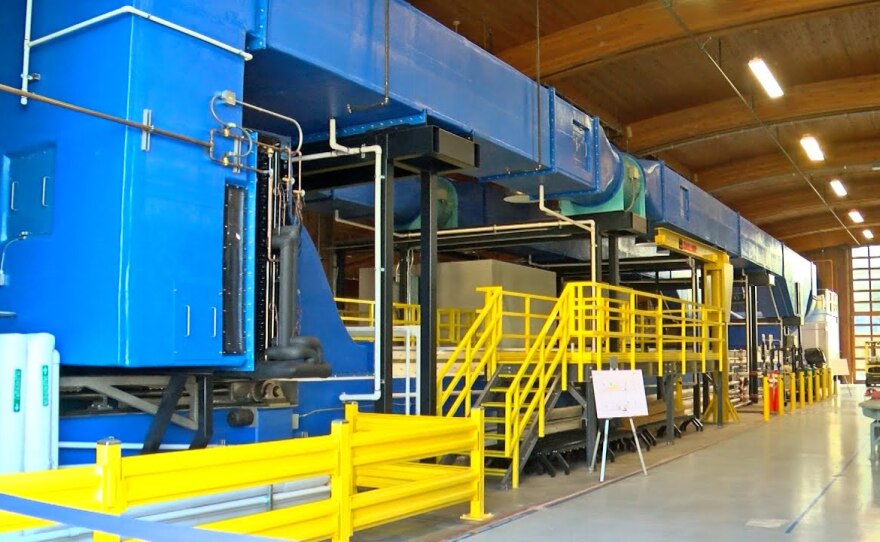San Diego researchers are celebrating the completion of a massive new ocean simulation machine that will help scientists better understand the interplay between the ocean and the atmosphere.
The $4 million device will allow researchers to recreate conditions in the open ocean, but in an environment that allows them to study how changes impact the ocean.
The Scripps Ocean Atmosphere Research Simulator, or SOARS, stands three stories tall and is 118 feet long. It resides inside a research building on the Scripps Institution of Oceanography campus.

The device has a water channel that is 8 feet wide, 8 feet deep and runs nearly the length of the building. Researchers can circulate 36,000 gallons of seawater.
RELATED: San Diego Scientists Make Waves In Climate Research
A paddle allows scientists to create waves up to 3 feet tall and the machine can create 62 mph winds inside the closed chamber.
“The waves affect the biology,” said Grant Deane, an oceanographer at the Scripps Institution of Oceanography. “The biology drives the chemistry. The chemistry impacts the bubbles and the foam. It’s this beautiful and complicated system.”
The simulator will allow scientists to turn their miniature ocean environment hot, cold, calm, or stormy depending on what they hope to study.
“We now know that there’s this intricate dance between chemistry, biology and physics at this boundary," Deane said. "What we don’t know is how our behavior and our choices is changing that boundary.”
The simulator has a closed system allowing researchers to only introduce the variables they are interested in.
If they want stormy weather in the arctic, scientists can introduce wind, waves and temperatures cold enough to create sea ice.
If they want to measure the impact of pollution on calm tropical seas, they can set the parameters to create that environment.
RELATED: San Diego scientists give mixed reaction to climate summit
“There’s a huge feedback between the ocean and the atmosphere and that’s what we’re able to now study,” said Kim Prather, a distinguished atmospheric chemist at the Scripps Institution of Oceanography.
Prather said understanding how the system works in the laboratory will allow scientists to understand changes in the real world. She will be among the first to use the simulator next year, but any scientist with a viable research project can apply and come to San Diego to use the simulator.
“Our ocean is warming out here,” Prather said. “We’re getting more blooms, so more things are coming out, so we also want to look at the health effects of these different toxic species that are forming in the water, what becomes airborne. And so, we can do all of that in this system.”
RELATED: California's Thirst For Water May Accelerate Global Warming
Studying waves in the lab is not new to Scripps or oceanography because researchers have been simulating waves in the lab since the 1960s.
Other schools have wave channel devices, however, none of them are as complex as this one.
The ability to introduce a lot of different variables makes the simulated ocean environments an excellent tool to study how the real ocean works in a controlled environment.
“One of the things that's very important about SOARS is that it brings all the capabilities of our older instrumentation into the future, as well as provides a whole bunch of new capabilities that we couldn't even dream of a few decades ago,” said co-principal investigator Dale Stokes, also a physical oceanographer at Scripps.





